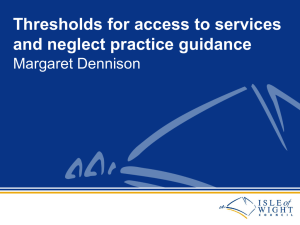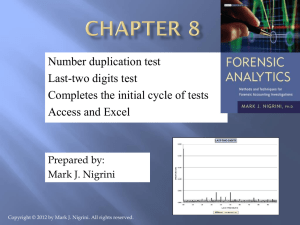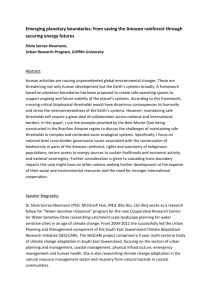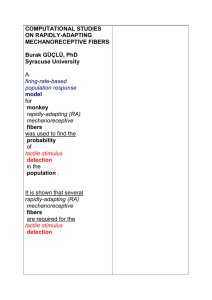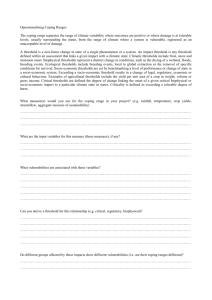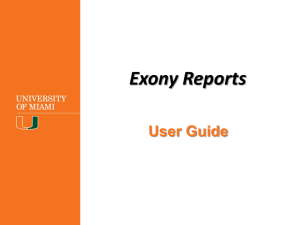Vector transmission – I/(1+kN2)
advertisement
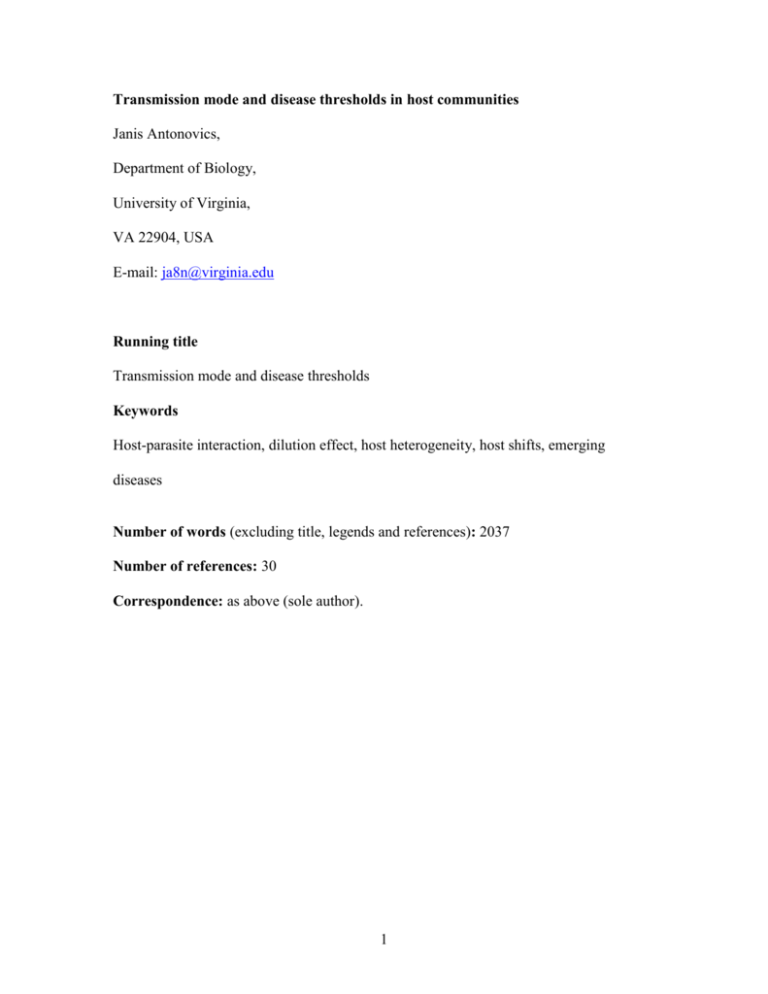
Transmission mode and disease thresholds in host communities Janis Antonovics, Department of Biology, University of Virginia, VA 22904, USA E-mail: ja8n@virginia.edu Running title Transmission mode and disease thresholds Keywords Host-parasite interaction, dilution effect, host heterogeneity, host shifts, emerging diseases Number of words (excluding title, legends and references): 2037 Number of references: 30 Correspondence: as above (sole author). 1 Abstract Disease thresholds based on density-dependent pathogen transmission have close analogies with thresholds for species persistence when there is competition for resources. However, if pathogen transmission is frequency-dependent or vector based, then twospecies thresholds can take quite different forms. Understanding how thresholds are affected by transmission mode is critical for understanding disease emergence and pathogen persistence in multi-host communities. (58 words) 2 INTRODUCTION Recent studies indicate that over 60% of human diseases may have a zoonotic origin (Taylor et al. 2001; Cleaveland et al. 2001) and a substantially higher percentage of livestock diseases are probably shared with other wild-ranging hosts (Daszak et al. 2000). Understanding the disease dynamics of such cross-species transmission is an important undertaking in the context of human and wild-life disease (Haydon et al. 2002; Altizer et al. 2003). There is substantial theory on the dynamics of one-pathogen two-host systems both in microparasites (Begon and Bowers 1994, 1995) and macroparasites (Greenman and Hudson 2000). Most of this theory has been developed on the assumption that transmission is a mass-action phenomenon such that the ‘force of infection” (the rate at which healthy individuals become diseased) is proportional to the density of infected individuals in the population (Anderson and May 1981, 1991). However, it is becoming increasingly recognized that transmission may often be a function of the frequency of diseased individuals in a population rather than density. This form of the transmission function has most often been emphasized in the context of sexually transmitted diseases (Hethcote 1984; Getz and Pickering 1993; Thrall et al. 1993; Lockhart et al. 1996), but frequency dependence also provides a reasonable approximation for vector transmitted diseases when vectors actively search for their hosts and compensate for increased host spacing by increasing their flight distances (Antonovics et al. 1995). Even for diseases that we normally consider to be transmitted aerially or by close contact, if the social context creates core groups where the number of interacting individuals is relatively constant (e.g. measles spread within classrooms, or 3 disease in mammalian social groups), transmission functions based on frequencydependence rather than mass-action may provide a better fit to observed epidemiological data (Bjornstad et al. 2002; Begon et al. 1999). There is an increasing interest in applying frequency-dependent transmission function to explain disease occurrence in natural communities (Schmidt and Ostfeld 2001; LoGuidice et al. 2003). Holt et al. (2003) examined the functional form of the thresholds for onepathogen two-host communities using an isocline framework based on analogies with models used to understand co-existence of species competing for shared resources. This “resource framework” provided an elegant summary of disease thresholds when disease transmission is density-dependent. The present study investigates disease thresholds under alternative transmission processes. In frequency-dependent transmission, contact rates per individual are constant irrespective of density. In vector-transmitted diseases, if vector population size is constant and uncoupled from host density, contact rates can be considered to be an inverse function of the square of population size (Antonovics et al. 1995). METHODS The dynamics of a microparasite one-pathogen two-host system is minimally represented by four equations, one pair for the susceptibles of each host (S1, S2) and one for the corresponding infected hosts (I1, I2). The general form of the equations for the infected hosts can be written as follows: dI1 11S1 f ( I1 ) 12 S1 f ( I 2 ) 1 I1 dt dI 2 22 S2 f ( I 2 ) 21S2 f ( I1 ) 2 I 2 dt 4 (1) (2) where, βij = the transmission coefficient from species j to species i, γ = the removal rate of diseased individuals (death rate plus recovery rate), and f(Ii) = the transmission function (sometimes termed the force of infection). The transmission function can be thought of as representing the functional relationship between population density and the number of contacts between susceptibles, Si and infecteds, Ii. Transmission functions of the following form were investigated: (a) Linear: pure density dependence, characteristic of classical mass-action models f(Ii) = Ii (3) (b) Linear: pure frequency dependence, characteristic of sexually transmitted diseases and active vectors f(Ii) = Ii / N (4) where N= S1+ I1 + S2+ I2 (c) Inverse quadratic: characteristic of vector transmitted diseases when there is vector limitation such that per capita visitation rates and therefore transmission declines at high densities f(Ii) = Ii /(1+kN)2 (6) where k determines the rate of decline of vector visits with increasing N. (d) Asymptotic: density dependence at low densities and frequency dependence at high densities. In this function, contact rates saturate at high densities and transmission becomes effectively frequency-dependent (Antonovics et al. 1995; Thrall et al. 1998). f(Ii) = Ii k/(1+k N ) (5) 5 where the constant k determines the rate of approach to the asymptote with increasing N. This effect has been shown to occur in field populations of Silene infected with anther smut (Biere and Honders 1998). Two-host disease threshold for each of these transmission modes was calculated using the matrix methods of Heesterbeek and Roberts (1995), based on the expected growth rate of the pathogen when it is rare. Thus, the equations for pathogen increase under frequency-dependent transmission can be re-written in matrix form as: I1 ' 11S1 / N 1 12S1 / N I1 I ' S / N 22S2 / N 2 I 2 2 21 2 (7) where now N = S1+S2 on the assumption that I1and I2 are very small. The dominant eigenvalue of the transition matrix then represents the intrinsic growth rate of the pathogen, R0. Values greater than 1 imply the disease has a positive growth rate (in conventional ecological notation, λI>1). Using each of the different transmission functions a-d (Eqs. (3)-(6)), phase diagrams were generated by setting the dominant eigenvalue, R0, equal to one and implicitly solving for S1, S2 using the ImplicitPlot function in Mathematica (Wolfram 2003). RESULTS The thresholds for the initial increase of disease are highly dependent on the functional form of the transmission coefficients (Figs. 1, 2, 3). The figures are based on parameter values chosen to illustrate the general form of the R0=1 isoclines; the differences in shape do not result from changes in the values of the individual parameters (transmission coefficients and recovery/death rates), but from changes in the transmission functions. 6 The thresholds for classical density-dependent transmission (Figs. 1a , 2a) “intuitively” follow the single species case, in that increasing numbers of either host result in an increasing R0. It is only the shape (convex or concave) of the threshold isocline that depends on the relative magnitude of the within and cross species transmission coefficients. The thresholds for frequency-dependent transmission (Figs. 1b, 2b) are quite different from the density-dependent case. The seemingly unusual form of these thresholds can be understood by plotting R0 against relative frequency (Fig. 3); this is equivalent to taking a diagonal cross-section of the phase diagrams in Figs. 1b and 2b. It is then readily seen that the thresholds now depend only on the relative frequency and not on the absolute density of the two species. For vector transmission there are both lower and upper thresholds (Figs. 1c and 2c) because the model assumes vectors become limiting to transmission at high host densities. When between-species transmission is less than within-species transmission (Fig. 1c), there is a saddle shaped region where Ro is greater than 1. Under some parameter values, this region splits such that pathogen invasion is not possible when the two hosts are at approximately equal frequencies (given symmetrical transmission and recovery in the two hosts), but is possible when there are relatively “pure” populations of each species. When within-species transmission is less than between-species transmission (Fig. 2c), invasion requires intermediate densities of both species. Where the transmission function is asymptotic (Fig. 4), the general shape of the threshold isoclines is intermediate between those for density-dependent and frequencydependent transmission. The three lines in Fig. 4 represent R0=1 isoclines for decreasing 7 values of the parameter k (i.e. a slower rate of approach to the asymptote and therefore more typical of density-dependent transmission). DISCUSSION The results show that disease thresholds in two-species systems are greatly affected by transmission mode, and that these thresholds take forms that are surprisingly different. Moreover, while in the case of density-dependent transmission the two-species thresholds can in part be deduced intuitively from the form of the single-species thresholds (Holt et al. 2003), this is not the case for frequency-dependent transmission. In the single-species case with frequency-dependent transmission, there is no numerical threshold providing β > γ (Getz and Pickering 1983; Thrall et al. 1993). However, adding a second host generates thresholds, in that R0 can be less than 1 in the two-species case even if β > γ in each species when they are alone. The reason is that addition of a second species to a single-species population (for example, species 1) alters the force of infection by changing the overall relative frequency of disease in the community. This effect was first noted by Ronald Ross in the context of a mosquitoes biting cattle yet being unable to transmit malaria from cattle to man (cited in Megroz 1931, footnote p. 121). More recently, decreased Lyme disease carriage by ticks in more diverse mammalian communities has been interpreted using this causative framework (LoGuidice 2003). Community ecologists have used the term “dilution effect” to describe situations where increasing species diversity is correlated with a decrease in disease prevalence. This “dilution effect” can theoretically come about as a result of two quite contrasting scenarios (Rudolf and Antonovics 2004). In the first scenario, “density- 8 dependent dilution”, increasing species diversity results in a decrease in the density of the individual species while the total number of individuals in the community remains the same. If transmission is density-dependent and if among-species transmission is less than within-species transmission (i.e. there is some host specificity) then the numbers of some individual species may fall below the population threshold for disease increase (Fig. 1a). This situation has been observed in experimental plant-pathogen communities (Mitchell et al. 2002). In the other scenario (“frequency-dependent dilution”) increasing species diversity does not change the density of the component species (e.g. they use different resources) but only alters their relative frequency; if among-species transmission is less than within-species transmission, then each species will serve to reduce the disease transmission rate to each other (LoGuidice 2003). The thresholds for increase presented here are “heuristic” and should be interpreted cautiously in the context of real world situations. The theory makes several assumptions, including that the disease is initially rare, that disease increase does not greatly change the number of susceptibles, and that the initial proportion of infecteds is in “stage-class” equilibrium (and that the matrix projection assumptions remain valid until this equilibrium is reached). For example, the theory presented here will not apply when populations are small and finite; thus “arrival” of a disease into a small population (either as a diseased immigrant individual or an extant individual becoming infected) will itself substantially change the densities and frequencies, and will result in non-equilibrium relative frequencies of I1 and I2. For example, the arrival of a pathogen onto one individual in a population of 5 will result in initial disease prevalence of 20%; this may well be above the expected equilibrium frequency, and the ensuing expectation would be 9 a decline in frequency even though threshold theory might predict that the disease should invade “when rare”. Very small diseased populations are often found in the SileneMicrobotryum system where there is frequency-dependent transmission (Antonovics et al. 1997). Clearly the transmission functions presented here do not exhaust the possibilities. For example, in many pathogens, there are life stages in both the vector and the host. Here, single-pathogen thresholds depend on transmission and recovery of the vector as well of the host (Anderson 1981; Bailey 1982). Also one-pathogen two-host models have no need to make the assumption that the intra- and inter-specific transmission functions are similar. For example, in an STD that is “shared” between two species, the cross species transmission is likely to be via an alternative non-sexual transmission mode (Lockhart et al. 1996). In conclusion, the results show that disease thresholds take canonically different forms depending on the transmission mode. As a consequence transmission mode has to be considered an important factor when considering pathogen invasion and persistence in multi-species communities, and when interpreting correlations between community composition and disease prevalence. However, while the theoretical issues are resolved relatively easily for specific cases, very few empirical studies have attempted to estimate the form of the transmission functions for any particular host-pathogen system, either through experiment or model fitting. This remains a major challenge for the future. 10 ACKNOWLEDGEMENTS I wish to thank my lab group for very helpful discussions that stimulated this paper, and Amy Pederson and Michael Hood for comments on the manuscript. Support from NIH Grant GM 60766-01 is gratefully acknowledged. REFERENCES Altizer, S., Harvell, C.D., and Friedle, E. 2003. Rapid evolutionary dynamics and disease threats to biodiversity. Trends in Ecology and Evolution 18: 589-596 Anderson, R. M. 1981. Population dynamics of indirectly transmitted disease agents: the vector component. In: Vectors of Disease Agents. Interactions with Plants, Animals, and Man. (eds. J. J. McKelvey, B. F. Eldridge, & Maramorosch, K.). Praeger, New York, pp. 13-43. Anderson, R.M. & May, R.M. (1981) The population dynamics of microparasites and their invertebrate hosts. Philosophical Transactions of the Royal Society London B, 291, 451-524. Anderson, R.M. & May, R.M. (1991) Infectious Diseases of Humans: Dynamics and Control. Oxford University Press, Oxford. Antonovics, J., Iwasa, Y., and Hassell, M.P. 1995. A generalized model of parasitoid, venereal, and vector-based transmission processes. American Naturalist, 145, 661-675. 11 Antonovics, J., Thrall, P. H., and Jarosz, A. M. 1997. Genetics and the spatial ecology of species interactions: the Silene-Ustilago system. In: Tilman, D., and Kareiva, P. (eds.) Spatial Ecology: The Role of Space in Population Dynamics and Interspecific Interactions. pp. 158-180. Princeton University Press. Bailey, N. T. J. 1982. The Biomathematics of Malaria. Charles Griffin, London. Begon, M. and R. G. Bowers. 1995. Beyond host-pathogen dynamics. In: Ecology of Infectious Diseases in Natural Populations. B. T. Grenfell and A. P. Dobson. Cambridge, Cambridge University Press: 478-509. Begon, M., and Bowers, R. G. 1994 Host-host-pathogen models and microbial pestcontrol - the effect of host self-regulation. Journal of Theoretical Biology 169: 275-287. Begon, M., Hazel, S.M., Baxby, D., Bown, K., Cavanagh, R., Chantrey, J., Jones, T., and Bennett M. 1999. Transmission dynamics of a zoonotic pathogen within and between wildlife host species. Proceedings of the Royal Society, Series B 266: 1939-1945. Biere, A., and Honders, S. C. 1998. Anther smut transmission in Silene latifolia and Silene dioica: impact of host traits, disease frequency and host density. International Journal of Plant Science 159: 228-235. Bjørnstad, O.N., Finkenstädt, B. & Grenfell, B.T. (2002) Endemic and epidemic dynamics of measles: Estimating epidemiological scaling with a time series SIR model. Ecological Monographs 72: 169-184. Cleaveland, S., Laurenson, M. K., and Taylor, L. H. 2001. Diseases of humans and their 12 domestic mammals: pathogen characteristics, host range, and the risk of emergence. Philosophical Transactions of the Royal Society London Series B 356: 991-999. Dasak, P., Cunningham, A. A., and Hyatt, A. D. 2000. Emerging infectious diseases of wildlife – threats to biodiversity and human health. Science 287: 443-449. Getz, W. M. and J. Pickering. 1983. Epidemic models: thresholds and population regulation. The American Naturalist 121: 892-898. Greenman, J. V., and Hudson, P. J. 2000. Parasite-mediated and direct competition in a two-host shared macroparasite system. Theoretical Population Biology 57: 1334. Haydon, D. T., Cleaveland, S., Taylor, L. H., and Laurenson, M. K. 2002. Idenifying reservoirs of infection: a conceptual and practical challenge. Emerging Infectious Diseases 8: 1468-1473. Heesterbeek, J. A. P., and Roberts, M. G. 1995. Mathematical models for microparasites of wildlife. In Ecology of Infectious Diseases in Natural Populations (eds. B.T. Grenfell, A.P. Dobson), pp. 90-122. Cambridge University Press, Cambridge. Hethcote, H. W. & Yorke, J. A. (1984) Gonorrhea: transmission dynamics and control. Lecture Notes in Biomathematics, 56, 1-105. Holt, R. D., Dobson, A. P. Begon, M., Bowers, R. G., and Schauber, E. M. 2003. Parasite establishment in host communities. Ecology Letters 6: 837-842. Lockhart, A. B., Thrall, P. H., and Antonovics, J. 1996. The distribution and characteristics of sexually transmitted diseases in animals: ecological and 13 evolutionary implications. Biological Reviews of the Cambridge Philosophical Society 71:415-471. LoGiudice, K., Ostfeld, R. S., Schmidt, K. A., and Keesing, F. 2003 The ecology of infectious disease: Effects of host diversity and community composition on Lyme disease risk. Proceedings of the National Academy of Sciences USA 100: 567-571. Megroz, R. L. 1931. Ronald Ross. Discoverer and Creator. George Allen, and Unwin, London. Mitchell, C.E., Tilman, D., and J.V. Groth, 2002. Effects of plant species diversity, abundance, and composition on foliar fungal disease. Ecology 83: 1713-1726. Rudolf, V., and Antonovics, J. 2004. Impact of frequency dependent disease transmission in one-pathogen two-host systems: the maintenance of species diversity. Proceedings of the Royal Society, Series B (in review). Schmidt, K. A., and Ostfeld, R. S. 2001 Biodiversity and the dilution effect in disease ecology. Ecology 82, 609-619. Taylor, L.H., Latham, S.M., and Woolhouse, M.E.J. 2001. Risk factors for human disease emergence. Philosophical Transactions of the Royal Society London Series B 356: 983-989. Thrall, P. H., Antonovics, J., and Wilson, W. G. 1998. Allocation to sexual vs. nonsexual disease transmission. American Naturalist 151: 29-45. Thrall, P. H., J. Antonovics and D. W. Hall. 1993. Hosts and pathogen coexistence in sexually transmitted and vector-borne diseases characterized by frequencydependent disease transmission. The American Naturalist 142: 543-552. 14 Wolfram, S. 2003. The Mathematica Book, Fifth Edition. Wolfram Media, Inc., 15 FIGURE LEGENDS Fig. 1. Disease thresholds for a one-pathogen two-species system when intra-specific transmission exceeds inter-specific transmission. (a) Density dependent transmission. (b) Frequency-dependent transmission. (c) Vector transmission where vectors become limiting at high host density. The shaded areas indicate where the threshold criterion, R0>1, is met. Parameter values: (a) β11 = β22=0.05; β12 = β21=0.01; γ =0.4 (b) β11 = β22=0.3; β12 = β21=0.1; γ =0.25 (c) β11 = β22=0.4; β12 = β21=0.1; γ =0.2; k=0.3. Fig. 2. Disease thresholds for a one-pathogen two-species system when inter-specific transmission exceeds intra-specific transmission. (a) Density dependent transmission (b) Frequency-dependent transmission (c) Vector transmission where vectors become limiting at high host density. The shaded areas indicate where the threshold criterion, R0>1, is met. Parameter values: (a) β11 = β22=0.05; β12 = β21=0. 1; γ =0.4 (b) β11 = β22=0.2; β12 = β21=0.45; γ =0.3 (c) β11 = β22=0.1; β12 = β21=0.4; γ =0.15; k=0.3. Fig. 3. Disease thresholds for a one-pathogen two-species system when contact rates saturate at high densities such that transmission is density-dependent at low densities but frequency-dependent at high densities. Lines bordering areas with increasing intensity of shading are threshold isoclines for increasing density-dependent transmission (i.e. decreasing values of k). (a) Inter-specific transmission less than intra-specific transmission (b) Inter-specific transmission less than intra-specific transmission. 16 Parameter values: (a) β11 = β22=0.2; β12 = β21=0.05; γ =0.1; k=0.1, 0.05, 0.025. (b) β11 = β22=0.1; β12 = β21=0.25; γ =0.15; k=0.5, 0.1, 0.05. Fig. 3. Reproductive rate of the pathogen plotted against the relative frequency of Species 1 and Species 2 for the case of frequency dependent disease transmission (parameters as for Fig. 1b). 17 Fig. 1. A B Species 1 18 C Fig. 2 A B Species 1 19 C Fig. 3 20 Fig. 4 A B Species 1 21
